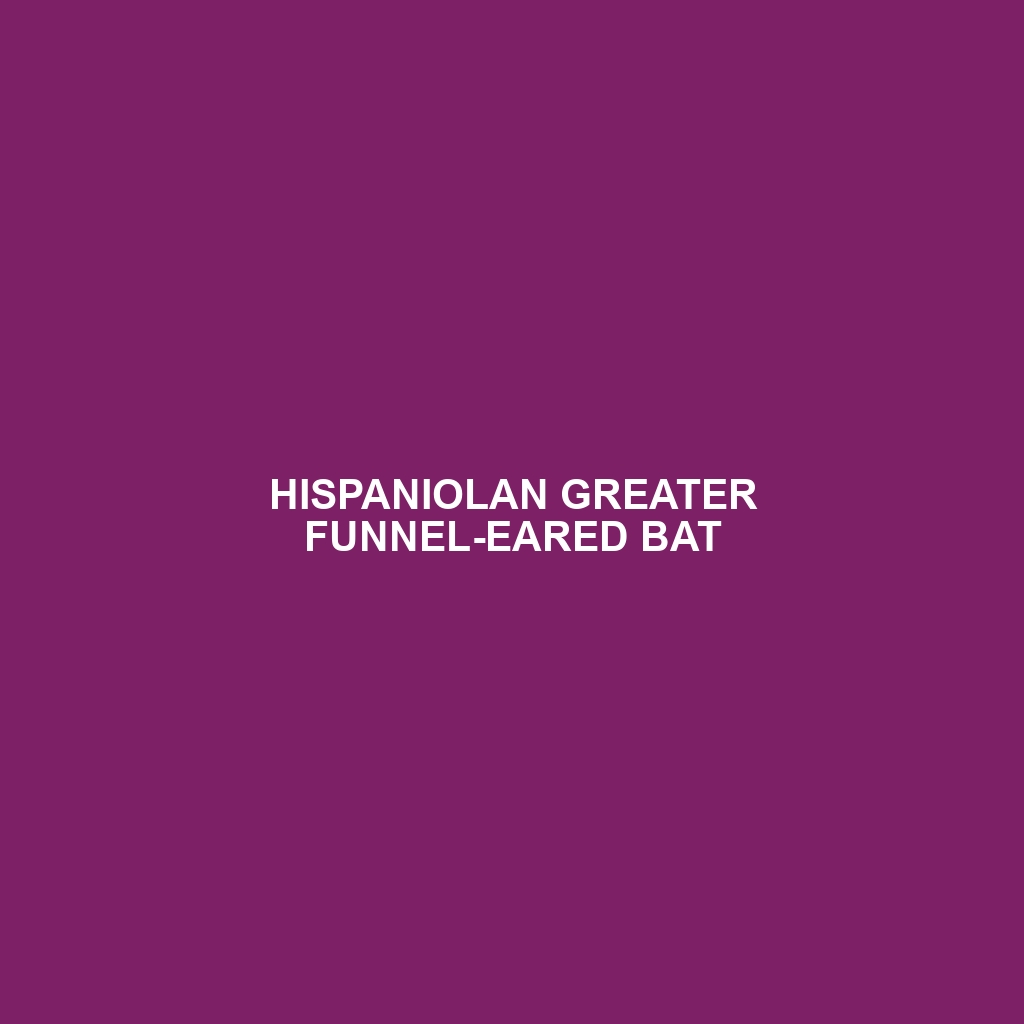Hispaniolan Greater Funnel-eared Bat: A Detailed Species Description
Common Name: Hispaniolan Greater Funnel-eared Bat
Scientific Name:
Habitat
The Hispaniolan Greater Funnel-eared Bat is primarily found in the Caribbean, particularly on the island of Hispaniola, which comprises Haiti and the Dominican Republic. These bats thrive in a variety of environments including tropical and subtropical forests, limestone caves, and mountainous regions. Their preference for such habitats is vital for their foraging and roosting behaviors, allowing them to adapt to both humid and drier climates within the mountainous areas of the island.
Physical Characteristics
This bat species typically measures between 8 to 10 centimeters in body length with a wingspan reaching up to 30 centimeters. The Hispaniolan Greater Funnel-eared Bat is characterized by its unique funnel-shaped ears, which can be several centimeters long. The fur is usually dark brown or grayish, providing excellent camouflage in their natural habitats. The bat’s slender body and elongated snout are distinctive features that help in identifying the species in the wild.
Behavior
Hispaniolan Greater Funnel-eared Bats are nocturnal creatures, primarily active during the night. They exhibit social behavior, often roosting in large colonies within caves or under rock overhangs. These bats utilize echolocation to navigate and hunt for food, showcasing remarkable agility during flight. Their foraging behavior includes flying in search of insects, making them key players in pest control.
Diet
The diet of the Hispaniolan Greater Funnel-eared Bat mainly consists of insects, including moths, beetles, and other nocturnal species. This insectivorous diet plays a crucial role in regulating insect populations, contributing to the balance of their ecosystem. Their foraging strategies involve capturing prey mid-flight with their agile maneuvering abilities.
Reproduction
The breeding season for the Hispaniolan Greater Funnel-eared Bat typically occurs during the warmer months, with females usually giving birth to a single pup per season. After a gestation period of approximately two to three months, the young are born and are nurtured in colonies until they are capable of flying independently. Maternal care is critical in the early stages of the pup’s life, influencing their survival and development.
Conservation Status
Currently, the Hispaniolan Greater Funnel-eared Bat is classified as *vulnerable* due to habitat loss, degradation, and disturbances caused by human activities. Conservation efforts are essential to protect their natural habitats and ensure the survival of this unique species.
Interesting Facts
1. The Hispaniolan Greater Funnel-eared Bat is known for its exceptional hearing abilities, which are critical for echolocation in dense forest environments.
2. This species is considered an endemic bat, meaning it can only be found in the Hispaniola region, making it a critical part of the island’s biodiversity.
Role in Ecosystem
As an insectivorous species, the Hispaniolan Greater Funnel-eared Bat plays a significant role in maintaining the ecological balance by controlling insect populations. Their foraging activities benefit agriculture and human habitats by reducing pest outbreaks, thus highlighting their importance in both natural and agricultural ecosystems.
